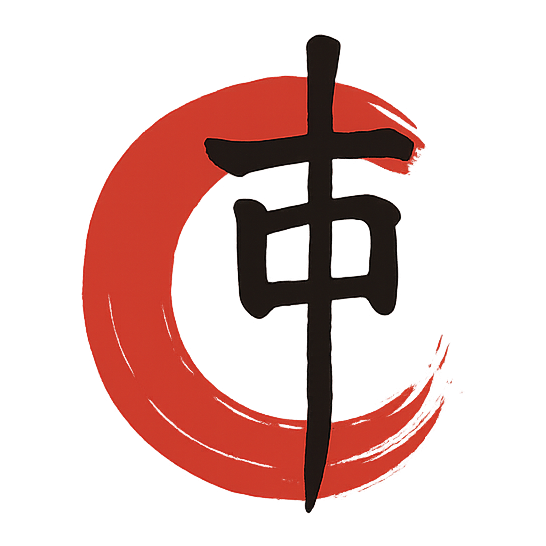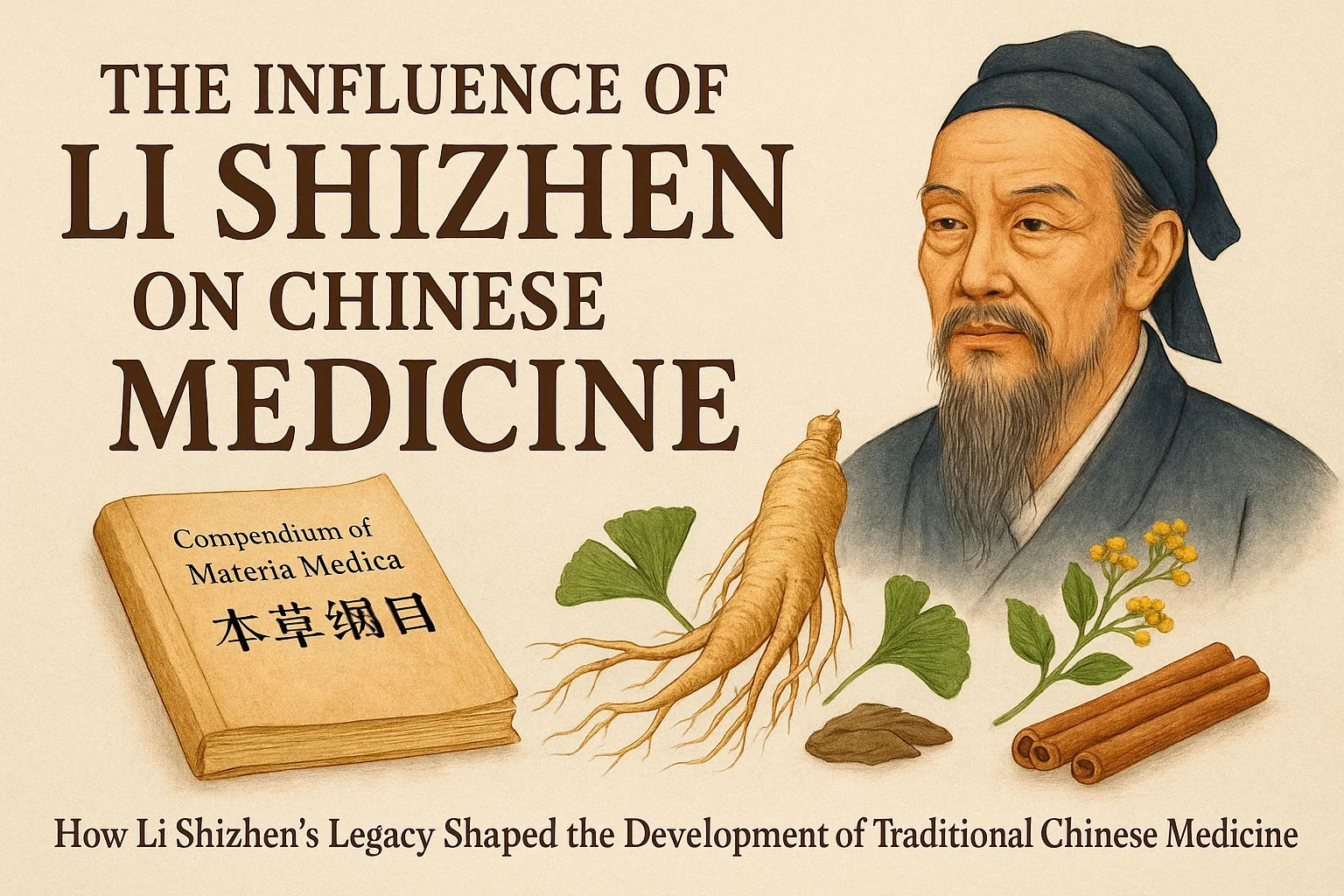How Li Shizhen’s Legacy Shaped the Development of Traditional Chinese Medicine
🔶 Introduction
Li Shizhen (李时珍), a legendary figure in the history of Traditional Chinese Medicine (TCM), is most renowned for his monumental work, Compendium of Materia Medica (本草纲目), which has had a profound and lasting influence on the development of herbal medicine and TCM as a whole. Li Shizhen’s contributions go far beyond his famous herbal compendium; his work laid the foundation for the scientific classification of herbs, the integration of TCM principles, and the systematization of medicinal knowledge.
Born in the Ming Dynasty (1518–1593), Li Shizhen dedicated much of his life to studying and cataloging medicinal plants, animals, and minerals, bringing a level of organization and clarity to TCM that had not been seen before. This article delves into Li Shizhen’s life, his Compendium of Materia Medica, and the lasting impact of his work on the field of Chinese medicine.
🔶 Li Shizhen’s Life and Legacy
Li Shizhen was born into a family with a strong background in medicine. His father, Li Xue, was also a renowned physician, and it was through him that Li Shizhen developed his interest in medicine. Despite facing many challenges and setbacks throughout his life, including poverty and the loss of his father at a young age, Li Shizhen persevered in his pursuit of medical knowledge. His extensive studies were both practical and theoretical, leading him to a deeper understanding of human physiology and the healing power of nature.
His most significant achievement, Compendium of Materia Medica (Bencao Gangmu), took over 26 years to complete. It is a comprehensive work that categorizes and details the uses of over 1,800 plants, animals, and minerals. The book is divided into 16 volumes and covers a wide range of medicinal substances used in TCM. Through this work, Li Shizhen contributed immensely to the scientific study of herbal medicine and its therapeutic applications.
🔶 The Compendium of Materia Medica (本草纲目)
The Compendium of Materia Medica is considered one of the most important works in the history of Chinese medicine and is still widely referenced today. In this comprehensive text, Li Shizhen meticulously cataloged the medicinal properties of herbs, discussed their therapeutic uses, and provided detailed instructions on how to prepare and administer them. The work is groundbreaking in its classification system, which laid the foundation for the later development of herbal pharmacology.
1. Classification System
- Li Shizhen’s classification of medicinal substances was based on their nature, taste, meridian entry, and functions, which is still the foundation of TCM herbal classification today.
- He was one of the first to introduce the idea of grouping herbs into categories based on their therapeutic effects, such as clearing heat, tonifying the body, or dispersing stagnation.
2. Comprehensive and Practical Knowledge
- The Compendium not only contains botanical descriptions and pharmacological effects, but also offers practical advice on diagnosis and treatment, often with illustrations of plants and their different forms.
- Li Shizhen’s work was innovative in its scientific approach, including the use of firsthand clinical experience and historical sources, marking a shift toward a more empirical, evidence-based approach to herbal medicine.
3. Inclusion of Over 1,800 Medicinal Substances
- The Compendium lists over 1,800 medicinal substances, many of which were previously unknown or poorly documented in earlier texts.
- The work discusses herbs that are still commonly used in modern herbal formulas, such as Ginseng, Gingko, Reishi Mushroom, and Cinnamon.
🔶 Li Shizhen’s Contributions to Chinese Medicine
Li Shizhen’s work went far beyond just cataloging medicinal substances. His contributions to theoretical medicine and clinical practices have shaped the foundation of TCM:
1. Systematizing Herbal Knowledge
- Li Shizhen brought systematic order to the field of herbal medicine, creating one of the first comprehensive, organized references that classified and explained medicinal herbs. This system remains the bedrock of TCM herbal practice.
- His work emphasized the importance of scientific observation, practical application, and holistic understanding, all of which are core principles in modern TCM.
2. Connecting TCM and Western Medicine
- Li Shizhen’s approach also helped connect TCM theory with practical knowledge, bridging the gap between traditional practices and early forms of Western medical science. This has contributed to the cross-cultural exchange of medical ideas, especially as Chinese medicine gained attention worldwide.
3. Innovative Thinking and Integration
- He sought to integrate the knowledge of predecessor works with his own observations, understanding that the field of medicine needed to evolve and adapt over time. His ability to synthesize various medical traditions was revolutionary, particularly when he critiqued existing practices and proposed improvements.
🔶 Li Shizhen’s Impact on Modern Chinese Medicine
Li Shizhen’s influence can be felt not only in herbal medicine but also in the broader development of TCM:
- Herbal Formulas: Many of the formulas listed in the Compendium of Materia Medica are still used in modern TCM to treat a variety of ailments. His work established the foundation for herbal formula construction, where herbs are combined in ways that maximize their therapeutic effects.
- Research and Education: Li Shizhen’s Compendium laid the groundwork for future research in TCM, particularly in pharmacology, botany, and clinical practice. His approach to empirical research paved the way for later TCM scholars to investigate the scientific basis of herbal treatments.
- Influence on Global TCM Practice: Li Shizhen’s influence extended far beyond China, reaching Japan, Korea, and other regions where TCM is practiced. His Compendium became a standard reference in the study of herbal medicine worldwide, contributing to the globalization of TCM.
🔶 Conclusion
Li Shizhen’s legacy in the field of Traditional Chinese Medicine is immeasurable. His Compendium of Materia Medica remains one of the most influential works in the history of medicine, shaping the way herbs are understood and applied in modern TCM. Through his efforts, Li Shizhen brought a level of scientific rigor, practical application, and systematic classification to the field that continues to inform and inspire TCM practitioners today.
His ability to integrate ancient knowledge with personal clinical experience, and his commitment to empirical research, makes Li Shizhen one of the most significant figures in Chinese medical history.


发表回复